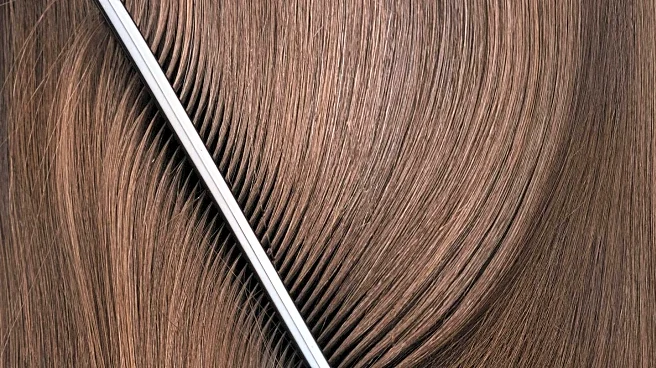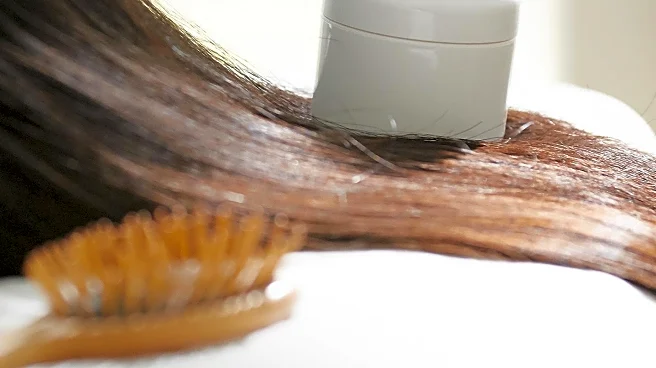What's Happening?
Individuals experiencing hair loss are increasingly turning to Platelet-Rich Plasma (PRP) treatments as an alternative to traditional medications. PRP involves using processed blood to stimulate hair regrowth, offering a potentially quicker and longer-lasting effect compared to supplements and medications. The treatment, which costs approximately $850 per session, is recommended to be conducted over a minimum of three sessions. While some dermatologists suggest combining PRP with medications for enhanced results, patients sensitive to prescriptions may opt for PRP alone. Alternatives such as Nutrafol supplements, rosemary oil, and low-level red light caps are also being considered by those seeking less intense side effects.
Why It's Important?
The exploration of PRP treatments highlights a shift in the approach to managing hair loss, particularly for individuals who experience adverse effects from conventional medications like spironolactone and minoxidil. This development is significant as it offers a new avenue for those seeking effective hair regrowth solutions without compromising their physical appearance or mental health. The broader impact includes potential changes in dermatological practices and patient preferences, as more individuals may opt for PRP and other natural alternatives. This could lead to increased demand for PRP services and influence the market for hair loss treatments.
What's Next?
As PRP treatments gain popularity, further research and clinical trials may be conducted to better understand their efficacy and long-term benefits. Dermatologists and healthcare providers might increasingly recommend PRP as part of a combination therapy for hair loss. Patients will continue to explore various treatment options, balancing effectiveness with side effects. The market for hair loss solutions could see growth in PRP services, prompting clinics to expand their offerings and invest in advanced technologies.











